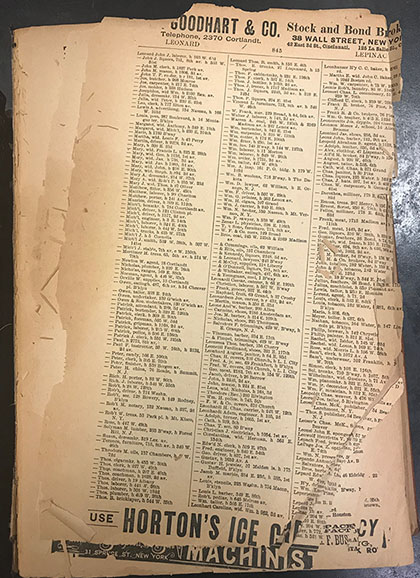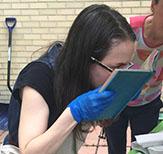Rhapsody no. 2. Book Smell: The Sequel
As a bookish sort, nothing makes me feel more at home than the smell of a library. When I began working at the New York Society Library a few years ago, I was immediately put at ease by the fact that it “smelled right”. It’s nice to know that others feel the same way. Indeed, it is now possible to buy ersatz library atmosphere in the form of perfume and candles, as my colleague Sara Holliday reported last year.
Assuming that your appetite for information about book smell is as insatiable as mine, let’s approach the subject once again, from a conservator’s perspective. Why do old books smell so good? Does a 500 year old book smell different than a 50 year old book? The smell of a book, apart its enriching sensory experience, can reveal quite a bit about its condition and age. It is, in fact, a research subject of its own.
How can something so wrong smell so right?
The intoxicating aroma of old books is actually the sweet, sweet smell of decay. This article from Science ABC has a handy, printable chart that describes the process quite succinctly. The comforting smell we associate with a good read is really the smell of acid hydrolysis in action. The scent of vanilla is peculiar to aging wood pulp based papers, which largely replaced rag paper over the course of the 19th century. This is due to the breakdown of lignin, a structural component of wood that happens to be similar to the compound vanillin. Acidic, yellowing, crumbling paper can have a particularly intoxicating aroma. For a book conservator, this can lead to all sorts of conflicting feelings. Very old paper that predates the industrial revolution, made from rags and with less acidic components, does not have that signature caramel smell. I would describe it as slightly grassy, reminiscent of fresh linen and rainwater. There are some who differentiate between papers from different regions, but I will leave that hair-splitting to others.
Modern papers, from the last few decades, tend to have more of an abrasive, chemical odor. New manufacturing techniques have led to less acidic paper, which are thus less likely to become yellow and brittle. These newer papers may be more stable than pages from the previous century, but do they smell as sweet? You be the judge.
Eat any good books lately?
It may alarm or delight you to know that commercially available artificial vanilla gets its flavor from vanillin, which is a by-product of…maybe you’ve guessed it…the wood pulp industry. So, the next time you enjoy a bowl of vanilla ice cream, take a moment to consider its connection to the great history of book publishing. Delicious!

Delicious, acidic paper


Disqus Comments